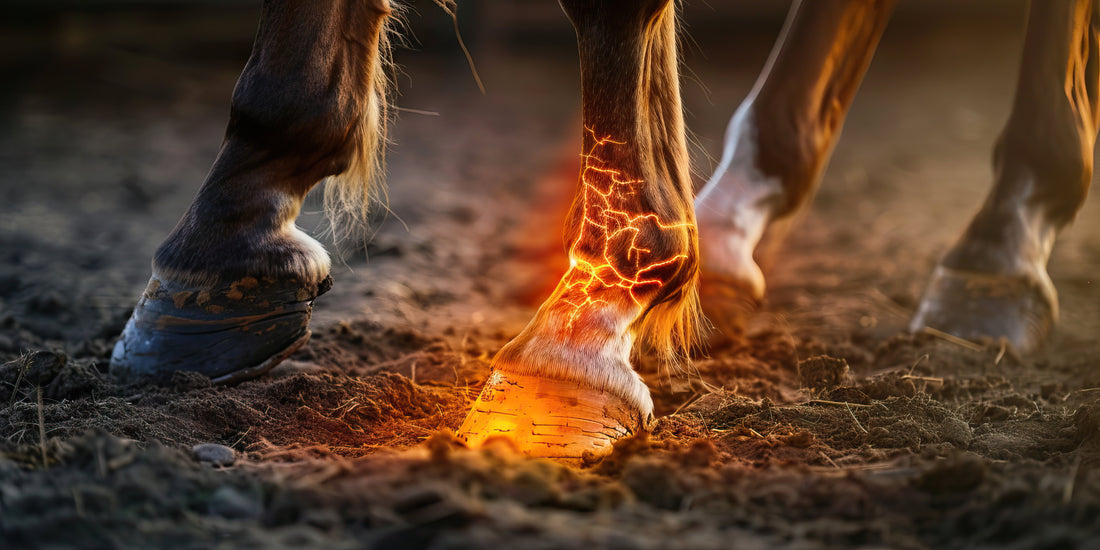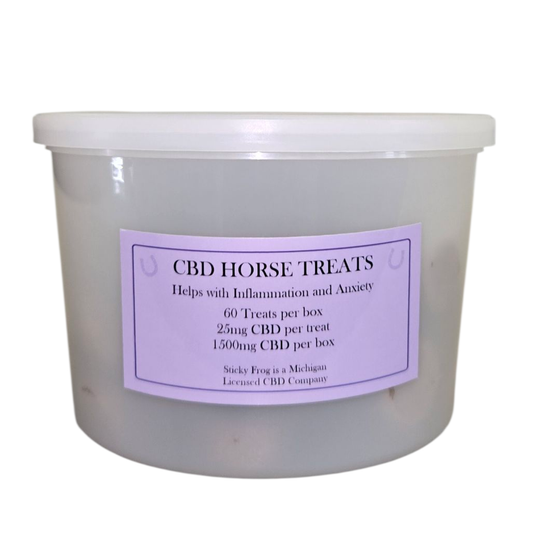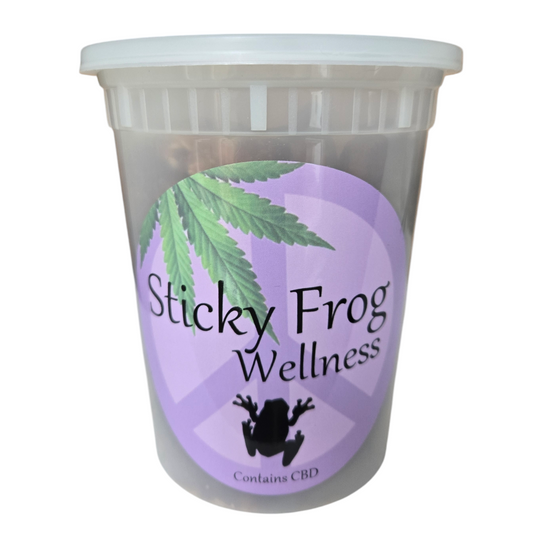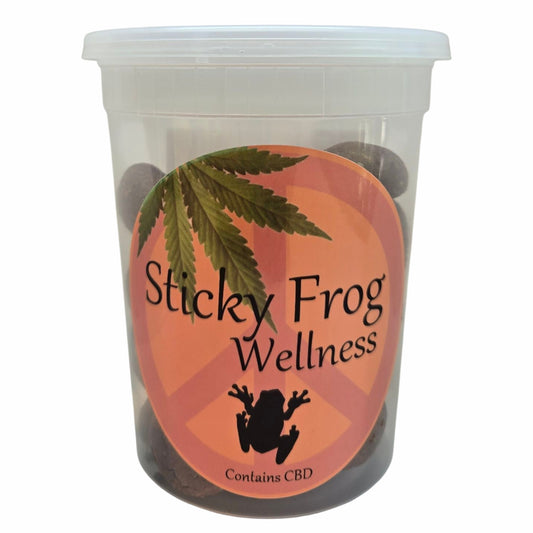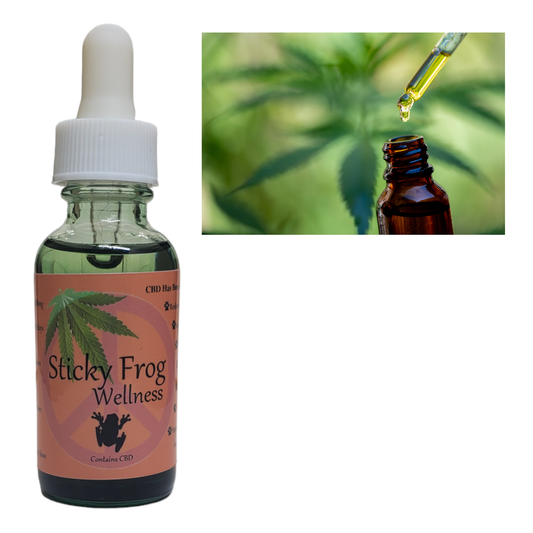Laminitis, a painful and potentially disabling condition in horses, involves inflammation and damage to the sensitive laminae inside the hoof. CBD (Cannabidiol) is increasingly recognized as a complementary approach for managing laminitis because of its anti-inflammatory, pain-relieving, and stress-reducing effects.
What is Laminitis?
Laminitis is a common hoof condition that affects horses, ponies, donkeys, and mules, involving inflammation of the laminae—the soft tissues that connect the hoof wall to the pedal bone (also called the coffin bone). The pedal bone is comparable to the bone at the tip of a human middle finger, with the hoof wall serving a similar function to a fingernail by attaching to the underlying structure.
The bond between the hoof wall and the pedal bone is critical, as it prevents the horse's full body weight from pressing directly through the sole. This bond is supported by a rich blood supply, making it highly susceptible to various systemic conditions that can trigger laminitis.
When laminitis occurs, inflammation in the laminae can result in:
- Pain and lameness
- Heat in the hoof
- Reluctance to move or bear weight
- In severe cases, rotation or sinking of the coffin bone (commonly referred to as founder)
Causes of Laminitis in Horses
Laminitis in horses can arise from various factors, often linked to dietary issues, systemic illnesses, or mechanical strain. Common causes include excessive grain consumption, grazing on lush grass, colic, diarrhea, sepsis, or uneven weight-bearing. For instance, if a horse steps on a sharp object and is unable to use one hoof, the opposite forelimb may develop laminitis from bearing the majority of the horse’s weight.
Additional factors that may increase the risk of laminitis include:
- Cushing’s Disease
- Metabolic Syndrome
- Lack of activity
- Overexertion from strenuous exercise
- Improper shoeing
- Incorrect hoof trimming
- Previous episodes of laminitis
- Obesity
- High levels of stress
Identifying and addressing these contributing factors is crucial to reducing the risk of laminitis and maintaining the horse's overall health.
Understanding Laminitis in Horses
Signs of Laminitis
The symptoms of laminitis vary in severity, depending on whether the condition is acute or chronic. In mild cases, laminitis may resolve within hours or days, while in severe cases, it can become a long-term issue. The most common sign is lameness, which can range from subtle fatigue to complete inability to bear weight. Horses that can bear weight may exhibit an altered gait.
Laminitis typically affects the forelimbs but can occur in any of the hooves. Due to the abundance of nerve endings in the hoof, laminitis is extremely painful.
Diagnosing Laminitis
Laminitis is usually diagnosed based on lameness, along with changes in the hoof, such as thickening of the hoof wall or changes in the pedal (coffin) bone. Contrast venography, which uses imaging to assess blood flow within the hoof, may also be performed to identify areas with reduced blood supply and determine the severity of the condition.
According to Dr. Diane Wagner, DVM, observing a horse’s walking patterns is important, especially when turning. Horses with laminitis may exhibit heel-first landings or shift their weight back onto their hindquarters with their front feet extended forward. Warm hooves and increased digital pulses are other common signs. Underlying conditions, such as Cushing’s disease, viral infections, or complications from steroid use, may also contribute to laminitis.
Treating Laminitis
Laminitis is a challenging condition to treat, even with extensive research. Early intervention is crucial for improving the prognosis. If a horse exhibits signs of laminitis—such as lameness, reluctance to bear weight, or suspected overconsumption of grain—it is essential to call a veterinarian immediately.
One of the most effective treatments is cryotherapy, where the horse stands in ice boots to reduce inflammation and prevent further damage. This procedure should only be performed by an experienced veterinarian, as close monitoring is required to ensure its success.
In severe cases, veterinary surgeons may manage laminitis through orthopedic procedures, especially when underlying causes require surgical intervention.
Prognosis and Long-Term Care
Horses diagnosed with laminitis may require lifelong management based on the severity of their condition. Recommendations often include:
- A low-carbohydrate, low-starch diet
- A deeply bedded, soft stall
- Corrective shoeing every 3–5 weeks
- Anti-inflammatory medication for pain and swelling
Routine veterinary visits, typically every 3–4 months, may be needed to monitor the affected hooves. While some horses may recover fully with early intervention, most will require ongoing care to prevent further complications.
CBD for Laminitis
CBD (Cannabidiol) has shown promise as a complementary therapy for managing laminitis. By interacting with the endocannabinoid system (ECS), CBD may offer the following benefits:
- Anti-inflammatory properties to reduce inflammation and prevent further tissue damage.
- Pain relief by altering pain perception without causing gastrointestinal issues common with NSAIDs.
- Stress and anxiety reduction, helping horses feel calmer and reducing secondary risks like colic.
- Improved circulation, which may support recovery by enhancing blood flow to the hooves.
CBD can be a natural, effective addition to a long-term care plan for laminitis, offering many of the same benefits as traditional medications without their adverse effects.
Nutrition and Prevention
Preventing laminitis starts with proper nutrition and management. According to the Royal Veterinary College, horses with laminitis should be fed hay at 1.5% of their body weight, with the hay soaked to reduce carbohydrate content. Hay is preferred over haylage, as haylage can increase insulin levels. Your veterinarian may also recommend fiber-based feeds like chaff or unmolassed sugar beet.
Key preventive steps include:
- Securing grain storage to prevent overconsumption.
- Gradually introducing horses to lush pastures.
- Monitoring for signs of illness, stress, or weight gain.
- Creating a nutrition and hoof-care plan with your veterinarian.
Food For Thought
Early detection and preventive care are essential to managing laminitis. While CBD shows promise as a natural option for reducing inflammation, pain, and stress, it should be used as part of a comprehensive treatment plan under veterinary guidance. Combining CBD with proper diet, hoof care, and routine check-ups can support your horse’s recovery and long-term health.

